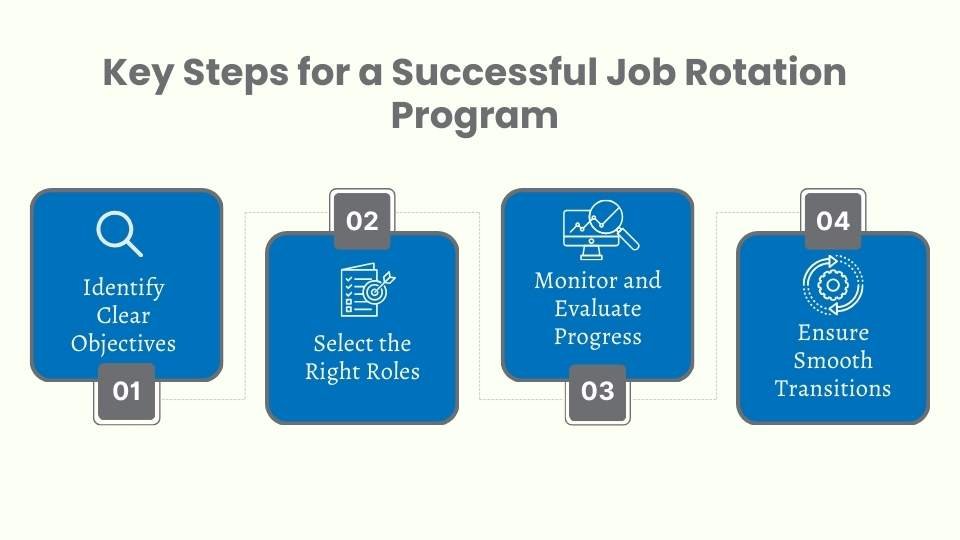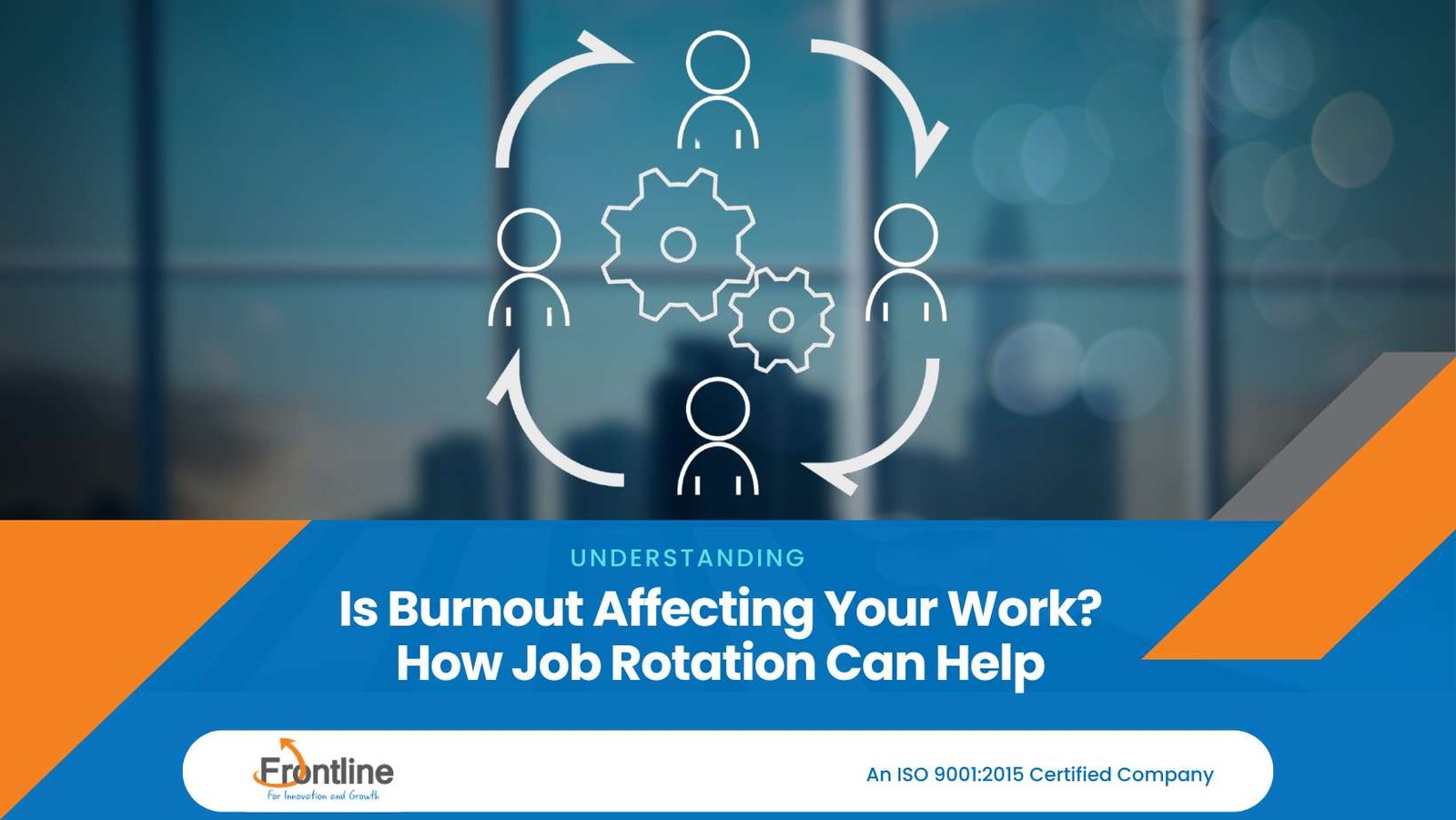Table of Contents
In today’s fast-paced work environment, burnout has become a widespread issue affecting employees across industries. The increasing demands of the workplace, long hours, and repetitive tasks can quickly take a toll on both physical and mental well-being. However, there is an effective strategy that can help alleviate burnout and boost productivity—job rotation.
What is Job Rotation?
Job rotation is a practice where employees are moved between different roles or tasks within an organization. This structured movement allows individuals to experience various aspects of the business. It helps them gain new skills, insights, and a refreshed perspective on their work. It is not just about switching positions; it is about diversifying tasks to break the monotony and reignite interest in the job.
The concept of job rotation is not new, but its implementation in modern workplaces has gained traction as companies strive to combat employee burnout and promote growth.
How Job Rotation Combats Burnout
1. Breaking the Routine
One of the primary causes of burnout is the feeling of being stuck in a repetitive cycle of tasks. When employees perform the same duties day in and day out, it can lead to mental fatigue, reduced motivation, and a lack of engagement. Job rotation disrupts this routine by providing new challenges, encouraging employees to step out of their comfort zones and engage with unfamiliar tasks. This change not only keeps the job interesting but also reinvigorates the workforce, leading to increased creativity and enthusiasm.
2. Skill Development and Career Growth
Job rotation fosters skill diversification, allowing employees to learn new competencies. In today’s competitive job market, employees are seeking opportunities that contribute to their professional growth. By rotating employees through different roles, companies provide them with the chance to develop a broader skill set, which can lead to enhanced job satisfaction and a renewed sense of purpose. Employees feel valued when they see a clear path for career development, which can significantly reduce the likelihood of burnout.
3. Enhanced Collaboration and Teamwork
Burnout can often arise from a lack of social interaction or feelings of isolation in the workplace. Job rotation encourages employees to work with different teams and departments, promoting collaboration and knowledge sharing. This cross-functional interaction not only strengthens teamwork but also creates a more cohesive work environment where employees feel supported and connected. By building a sense of camaraderie, job rotation helps employees stay engaged and reduces the risk of burnout.
4. Providing a Sense of Accomplishment
Job rotation introduces employees to new challenges, giving them opportunities to solve problems in fresh contexts. Each successful transition between roles provides a sense of achievement, helping to reinforce self-worth and motivation. Employees who feel like they are continuously achieving new milestones are less likely to experience the emotional exhaustion associated with burnout.
The Benefits of Job Rotation for Employers
While job rotation is a powerful tool for reducing burnout, it also brings substantial benefits to the organization as a whole.
1. Increased Employee Retention
Companies that invest in their employees’ development through job rotation are more likely to retain talent. Employees appreciate organizations that prioritize their well-being and provide opportunities for growth. When employees are given diverse experiences and feel their roles are contributing to their long-term career aspirations, they are less likely to seek opportunities elsewhere. Reduced turnover means companies can save on the costs associated with recruitment and onboarding new employees.
2. Higher Productivity and Innovation
When employees are exposed to different roles, they bring new ideas and perspectives to the table. This cross-pollination of ideas leads to increased innovation within the company. Furthermore, as employees rotate, they acquire a holistic understanding of the business, which enables them to work more efficiently. This can significantly boost overall productivity, as employees who are engaged and stimulated by new challenges tend to work more effectively.
3. Stronger Organizational Resilience
Job rotation helps to build a more resilient workforce. When employees are cross-trained in multiple roles, the company is better equipped to handle unforeseen disruptions, such as sudden staff shortages or organizational changes. Employees who have rotated through various positions can step in when needed, minimizing the impact of any workforce gaps. This flexibility strengthens the company’s ability to adapt to changing circumstances and maintain continuous operations.
4. Enhanced Leadership Pipeline
By giving employees exposure to different roles, job rotation helps to identify potential leaders within the organization. Employees who excel in various positions demonstrate versatility and a broad understanding of the business, making them ideal candidates for leadership roles. This practice ensures that companies have a well-prepared internal pipeline of future leaders, reducing the need to hire externally for managerial positions.
Implementing a Successful Job Rotation Program
To fully reap the benefits of job rotation, it is important for companies to implement the program thoughtfully and strategically.
Here are some key steps to consider:

1. Identify Clear Objectives
Before implementing a job rotation program, companies should clearly define the goals they aim to achieve. Whether the objective is to reduce burnout, enhance employee skills, or build a more versatile workforce, having a clear vision will guide the structure of the program.
2. Select the Right Roles
Not all roles are suitable for rotation. Companies should carefully assess which positions are best suited for cross-training and which employees are ideal candidates for the program. Roles that require a deep specialization may not be appropriate for rotation, while more general roles can offer great flexibility.
3. Monitor and Evaluate Progress
Once the job rotation program is in place, it’s crucial to monitor its effectiveness. Regular feedback from employees and managers can help identify any areas for improvement. Additionally, tracking key performance metrics, such as employee engagement, productivity, and turnover rates, can provide valuable insights into the program’s success.
4. Ensure Smooth Transitions
To avoid disruptions in workflow, companies should establish clear processes for transitioning employees between roles. Providing proper training and development along with support during the rotation period is essential to ensure that employees can quickly adapt to their new responsibilities without feeling overwhelmed.
Conclusion
Burnout is a growing concern in today’s workplace, but job rotation offers a practical and effective solution. By breaking routine, fostering skill development, and promoting collaboration, job rotation helps employees stay engaged, motivated, and productive. For organizations, the benefits are equally significant, from increased employee retention to a stronger leadership pipeline.
199 views






